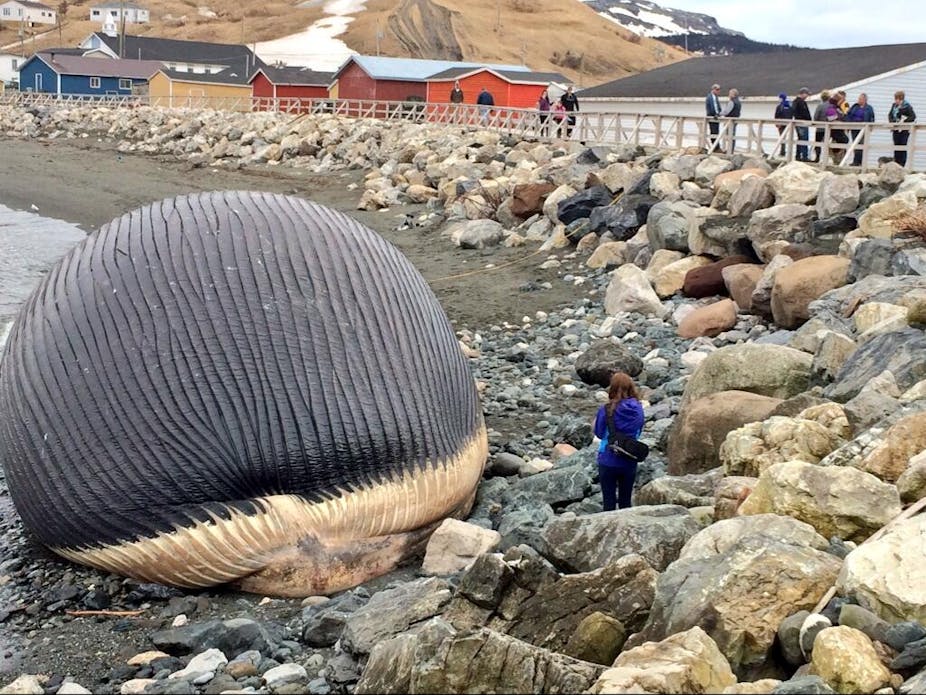The residents of Trout River in Newfoundland, Canada have a stinking whale of a problem. What to do with the 81-feet-carcass of Balaenoptera musculus on their shore?
While such an occurrence is not uncommon, the blue whale of Trout River is a worry because some dead marine mammals can explode. In 2013 an exploding sperm whale was recorded on camera.
In 2004, in the hope of studying it, Chinese scientists decided to move the carcass of a 60-ton sperm whale through the city of Tainan, Taiwan. While on the tractor-trailer, the sperm whale exploded, showering stores, cars and onlookers with whale insides.
Whales explode because of gas buildup in their abdominal cavity. When mammals die, their last meals start to rot. For the gut bacteria digesting that rot, it provides a tasty meal. But the digestion process releases methane gas, which makes the whale bloat and sometimes explode.
Gut reaction
I have a vexed relationship with exploding whales. On the one hand, I have a visceral disgust for mammal anatomy, to a near debilitating degree. I walked an extra block in college just to avoid going through the vertebrate anatomy lab. I had to leave the only mammal dissection I ever attended because I couldn’t stop gagging. And yet, despite all this, I will stop whatever I am doing to watch an exploding whale video, with disgust and fascination.
And I am not alone. Millions of people worldwide are obsessed with this cetacean time bomb. To capitalise on this, scientists decided to create a very different kind of whale watching experience. HasTheWhaleExplodedYet.com allows you to receive regular updates on the state of the ballooning carcass.
I, like many others, want so badly for the whale to explode. But sadly, it doesn’t look like it will happen. The carcass has begun to deflate. This is because, unlike the exploding sperm whale of 2013, blue whales are built for this.
As lung-filter feeders, blue whales make a living by withstanding massive internal pressure. When blue whales find a school of krill, they open their jaw wide-open, and fill a specialised abdominal cavity at a rate of 20 tonnes of water per second. This makes the blue whale, unlike the exploding sperm whale, a tough balloon.
Post-mortem
Something needs to be done about the carcass to stop the stench. In 1970, when faced with the same problem, the Orgeon State Highway Division decided to blow up the whale with dynamite. The event cannot be termed a complete success. Onlookers hundreds of feet away were showered with whale blubber and a car was destroyed. But the TV news coverage of the event is probably some of the best ever produced.
So, given the lessons of the past, the residents of Trout River should be pleased by the Royal Ontario Museum’s decision to remove the carcass for study. If successful, they will get rid of the stink without a whale-blubber shower.

